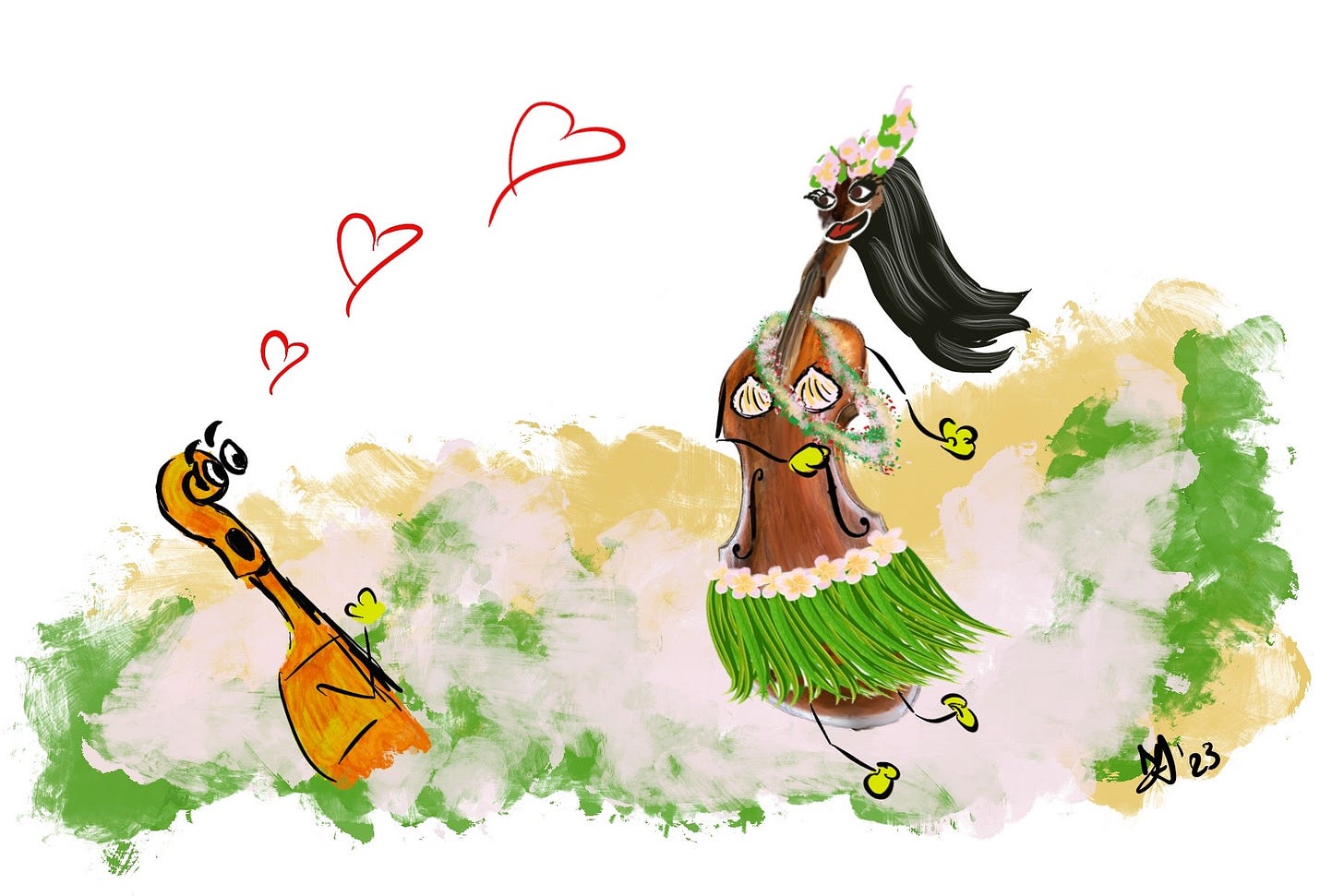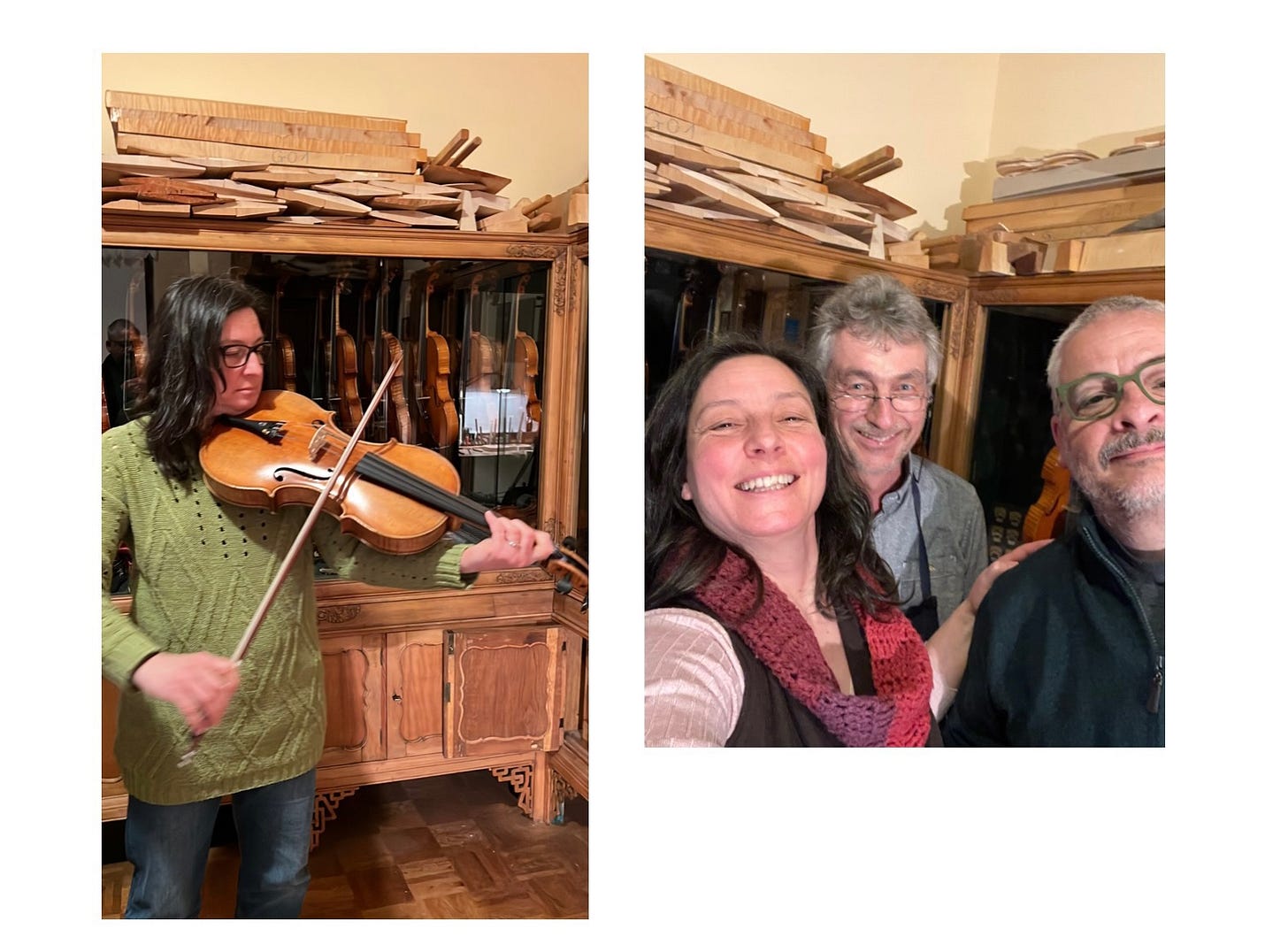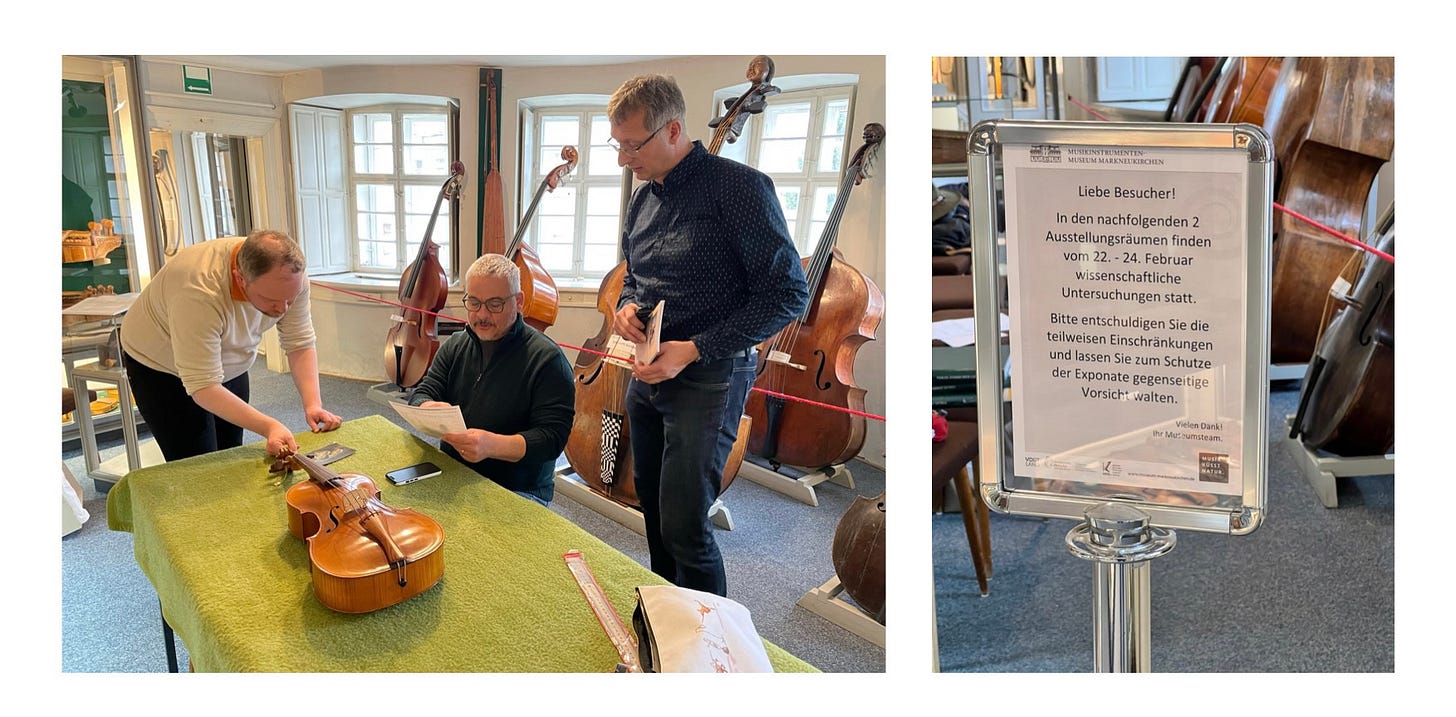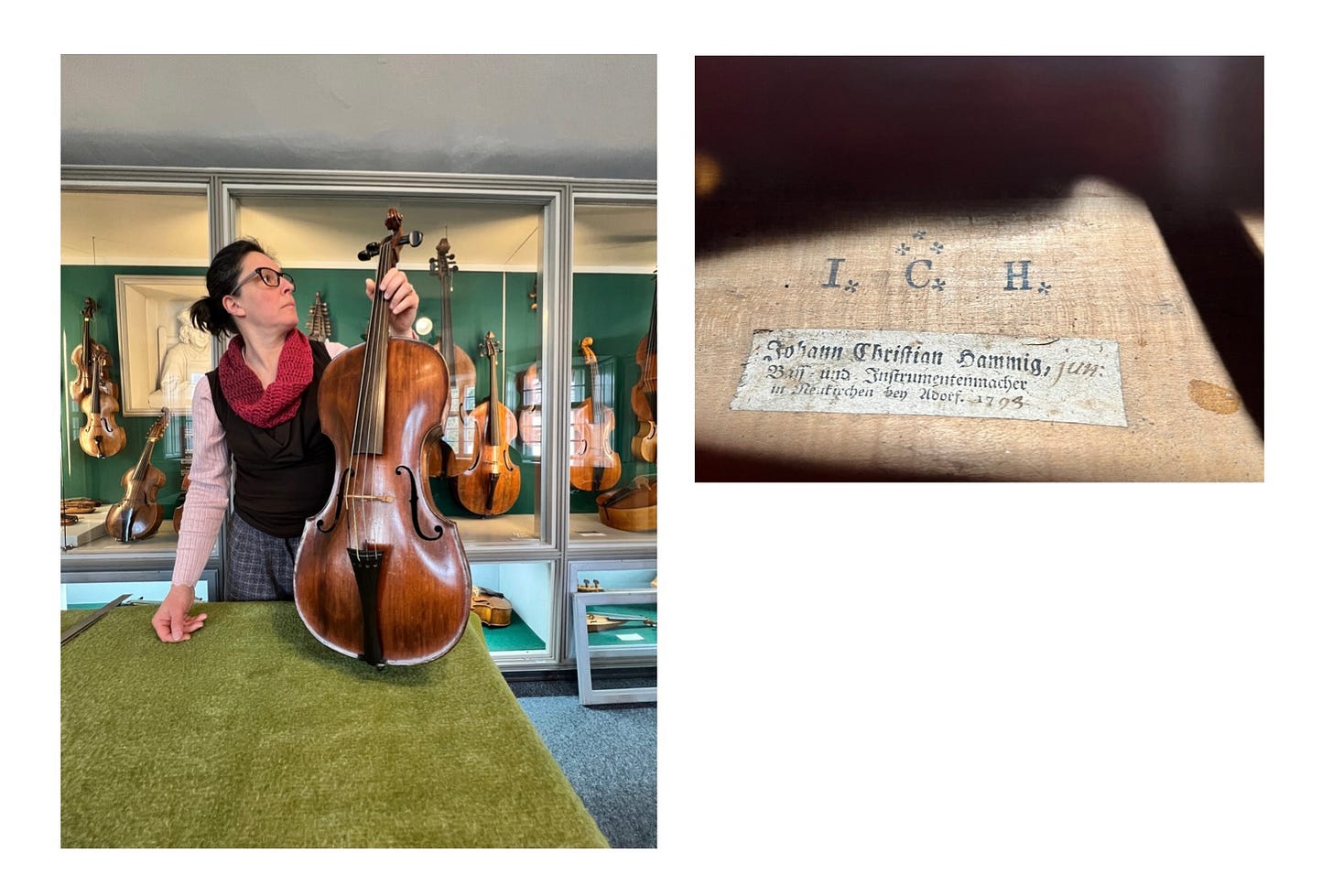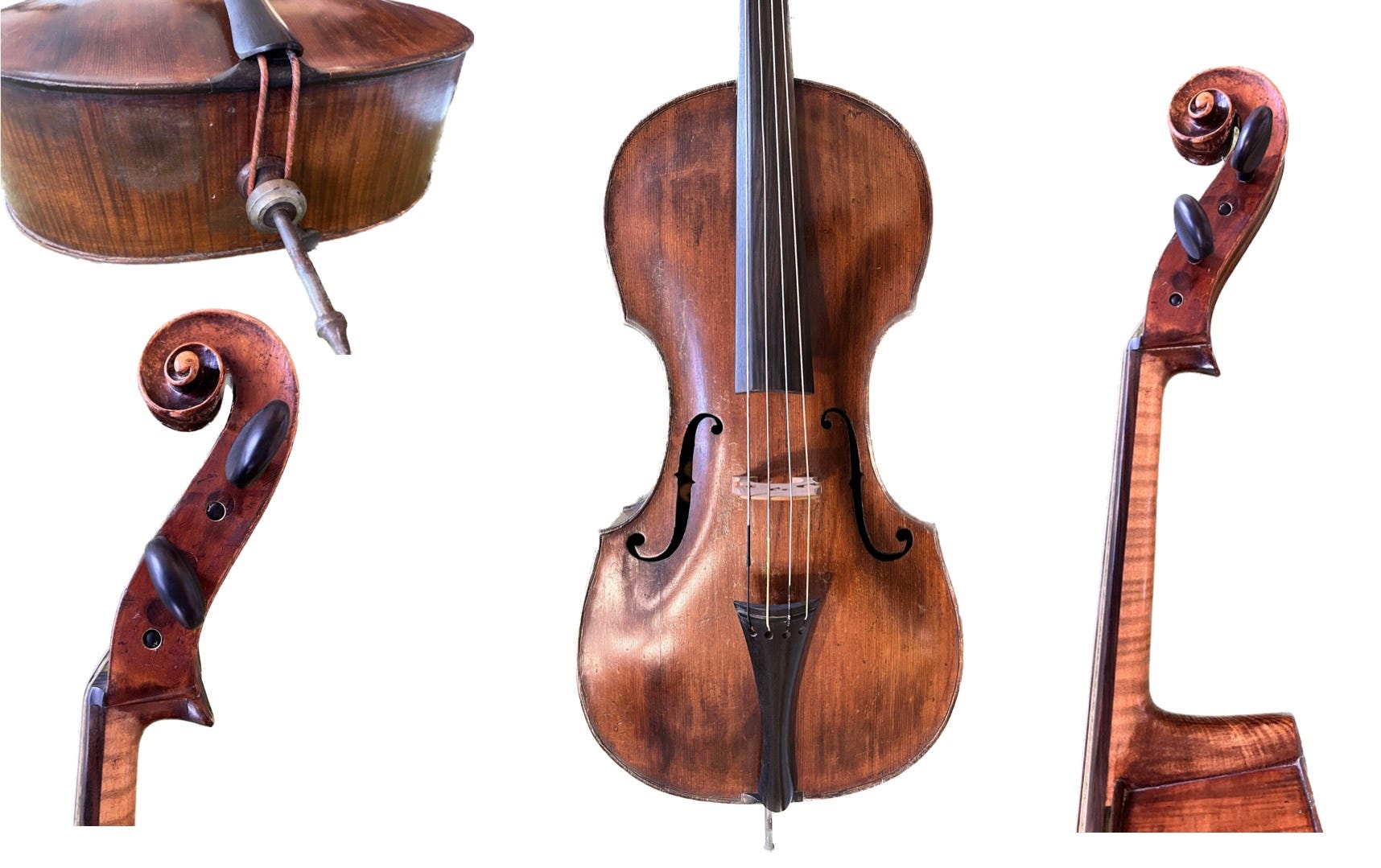Last Friday we were In Markneukirchen Music Instruments museum!
We were welcomed super warmly by Ekkard Seidl, restorer for the museum and profound researcher in the history of Lutherie in the Vogtländ, by the director of the museum Kim Grote and librarian and archivist Mario, all super helpful and generous with their time and knowledge.

We had the opportunity to study not only instruments but also old catalogues from early 20th-century factories, which gave us a new perspective on the interpretation and use of the viola pomposa in recent times.
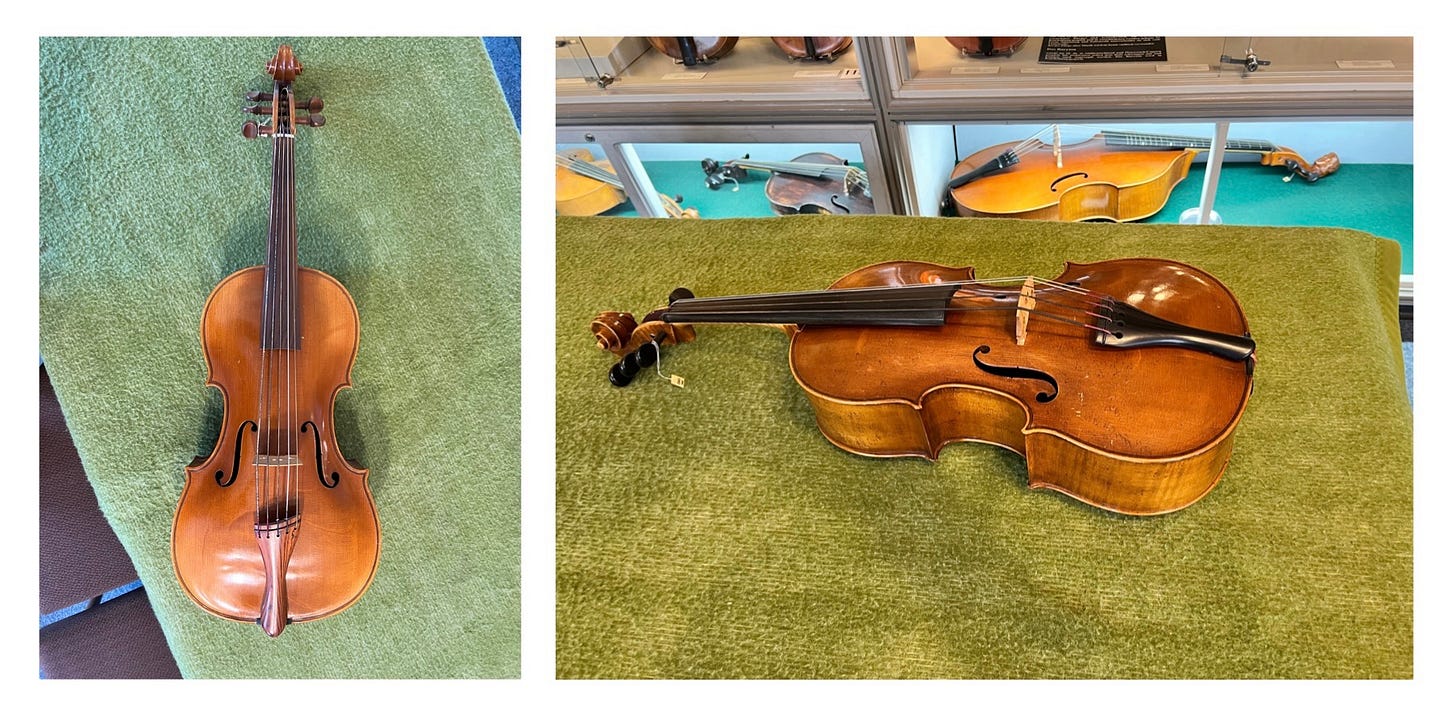

In his Versuch einer Anweisung die Flöte traversiere zu spielen (Berlin 1752), Quantz advises cellists to own more than one instrument, a small one for solos and a big one for ripieno.
Those who not only accompany on the violoncello but also play solos on it, would do well to have two dedicated instruments, one for solos, the other for ripieno parts in large ensembles. The latter must be larger and must be equipped with thicker strings than the former. If a small instrument with thin strings were employed for both types of parts, the accompaniment in a large ensemble would have no effect whatsoever. The bow intended for ripieno playing must also be stronger, and must be strung with black hairs, with which the strings may be struck more sharply than with white ones.
Features of the big version are pretty well known: a violin bass, slightly bigger than today’s cello, as we see in a wide range of iconography. I don’t want to use the word “standardised” for it, but it’s evident that small cellos were much less standardised than the big ones.
In Markneukirchen, we saw one small cello made by Johann Christian Hammig junior (II) in 1798 (listed as 1793). In the chart below, a comparison between measures of this small cello and a bigger one of the usual shape made in 1797, same museum:
Pics speak for themselves about the personal shape. Slim and elegant, with comfortable wide CCs. The neck has been grafted, the scroll is said to be original. The pegbox shows that strings were repositioned, but they don’t seem they have been a different number. I don’t quite understand the wear signs on the bottom rib, as they are so asymmetrical.





